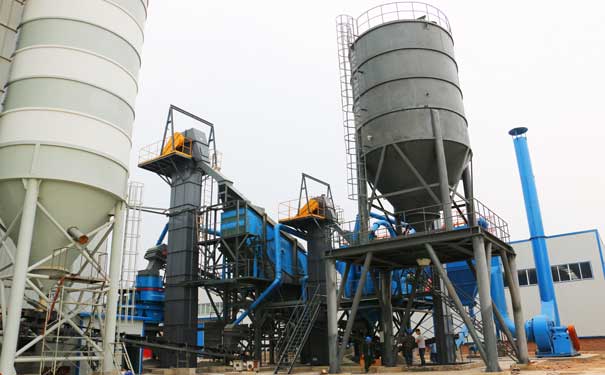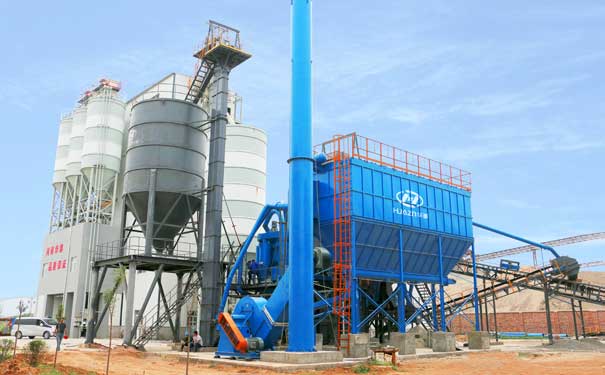With the rapid development of infrastructure construction in my country, the demand for sand and gravel aggregates in highways, housing constructions, viaducts, etc. is increasing. However, the shortage of natural sand and gravel resources and rising prices make it difficult to meet the huge demand for sand and gravel in the market. At present, in the face of the increasing demand for sand and gravel in all walks of life, the emergence of machine-made sand has not only alleviated the shortage of sand in the market, but also the price is relatively cheap compared with natural sand. High-quality machine-made sand can satisfy different constructions the sand demand of the project. Then, what are the production process and quality control requirements for high-quality manufactured sand? Mainly introduce for everyone from the following aspects:
1. The quality of the parent rock of the optimized mine determines the quality of the machine-made sand from the source. In the selection of sand field mines, survey work should be done well, and mines with thin overburden soil, less mud in the interlayer, high parent rock strength and good rock integrity should be selected. The parent rock should not have potential alkali-aggregate reactivity, and it is advisable to use limestone, dolomite, granite, basalt, etc. that are clean, hard in texture, free of weak particles and weatherless fossils.
2. Three-stage crushing, two plastic surgery
Firstly, a jaw crusher is used to pre-crush the mother rock (coarse crushing) by extrusion to reduce the diameter of the mother rock and reduce the production pressure of the impact crusher; then the impact crusher is used to throw the rock to impact the mother batch carry out the second crushing (medium crushing) to further develop the micro-cracks of the aggregate produced by the jaw crushing, and finally the aggregate is broken again from the micro-cracks, and the second crushing and the first shaping of the aggregate are completed; the vertical shaft is finally used the impact crusher performs the third crushing (fine crushing) and the second shaping of the aggregate in a "stone-beat-rock" or "stone-beat-iron" method.
3. Secondary desliming
Before coarse crushing, use a vibrating feeder and a desliming screen to carry out the first desliming treatment of the mother rock and soil with a particle size of less than 30mm, and carry out the second desliming treatment for the aggregates with a particle size of less than 10mm before the middle crushing, Remove the soil and stone chips in the aggregate, and ensure that the MB value of the aggregate is less than 0.5.
4. Gradation adjustment is equipped with a circulating screening system in the medium and fine crushing stages. By adjusting the silo, part of the aggregate can be returned through the circulation system to be broken into smaller particles again, and the production of aggregates of different sizes can be adjusted according to needs. The proportion of small particles is adjusted through winnowing control powder to solve the problem of “more at both ends and less at the middle”.
5. The finely crushed aggregate of the winnowing control powder is subjected to a gravity winnowing control powder first to control the stone powder content at about 10%. Before the finished sand enters the silo, adjust the wind pressure of the winnowing machine to extract the stone powder according to the needs. The stone powder content meets the requirements of machine-made sand and stone powder content for different strength concretes.
6. Automatic humidification after the winnowing process is completed, the machine-made sand is automatically humidified, and the moisture content of the machine-made sand is controlled at 2.5% to 3.5%. The stable moisture content facilitates concrete production and quality control, can effectively avoid dust during production and transportation, and prevent aggregate segregation during loading, unloading and transportation.
7. Environmental protection. In terms of mining, in accordance with the construction requirements of green mines, do a good job in environmental protection, restoration and governance, restoration of greenery, energy conservation and emission reduction, water and soil conservation, and geological disaster prevention. During the blasting process, spray or water bag covering is used for dust control. In the selection of production equipment, choose crushing and screening equipment with superior noise reduction performance and less dust. In terms of the design and layout of the dust removal process, each dust-generating part is equipped with a dust suction device, and the semi-finished product and the finished product silo are fully enclosed and isolated by color steel tiles. In terms of waste recycling, the two separated mud and stones are separated again, and the stones are used as roadbed fillers and concrete brick materials for secondary processing, and the mud is stacked separately for later vegetation restoration to increase the utilization rate of materials and increase economic benefits, to reduce the land occupied by waste residue storage, and reduce the safety hazards of waste residue stacking.
For more information, you can click: www.lydhchina.com




